Last updated on November 28, 2023
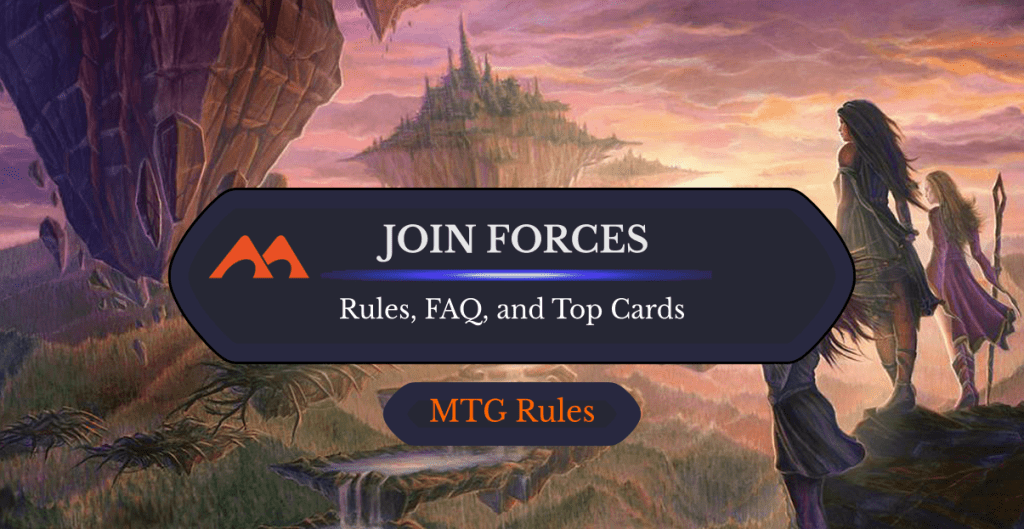
Collective Voyage | Illustration by Charles Urbach
Hey you. Yeah, you. You. Me. Let’s team up. Whaddya say?
That’s right, we’re joining forces today, whether you like it or not. Let’s look at a mechanic that’s supposed to help you form alliances with other players, but actually just hands out favors to everyone regardless of who pitches in. Join forces is the MTG equivalent of those group projects in school where one person did absolutely nothing but still got an A+ thanks to everyone else’s hard work.
I’ll be putting on my L1 Judge hat to walk you through how this keyword works, and leave you with some thoughts about the mechanic. I’ve got some strong opinions about this one.
How Does Join Forces Work?
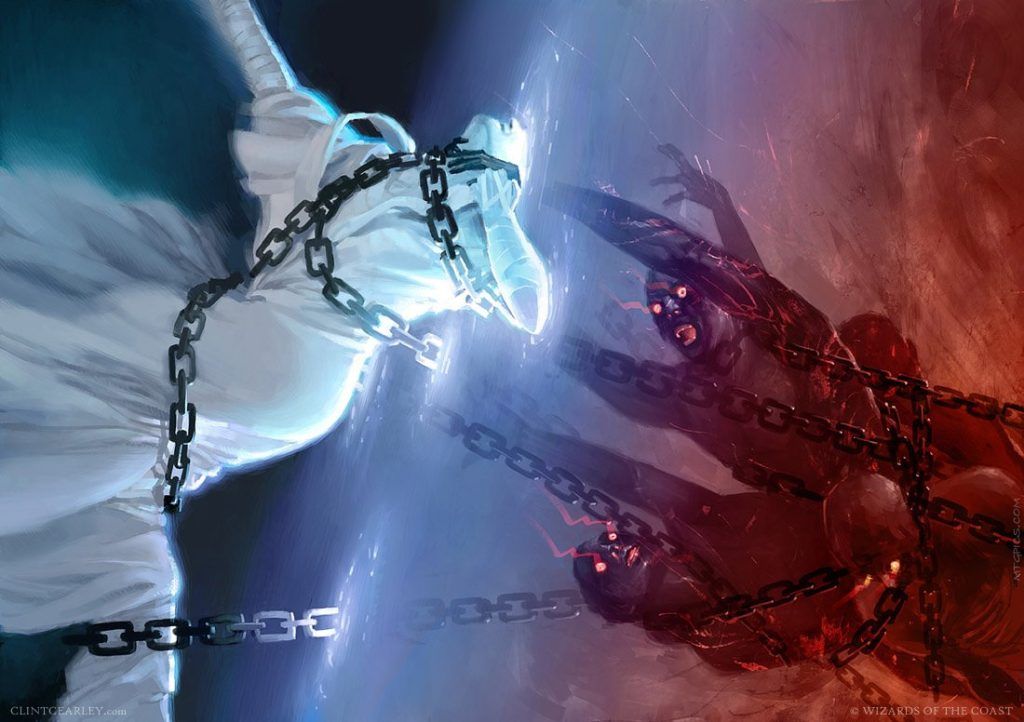
Shared Trauma | Illustration by Clint Cearley
Cards with join forces allow players to spend any amount of mana to amplify the effect of the card, which then counts the total amount of mana spent by all players. Four of the five cards have a group hug-style effect that benefits everyone, and the resulting effect is usually symmetrical regardless of how much mana each individual player paid.
The mechanic adds up the total amount of mana spent by players during the resolution of the spell, which doesn’t include the initial mana spent to pay for the card’s mana cost.
Also, note that most of the cards in this cycle affect all players whether they filtered any mana into the card or not. That means you can get the full benefit of the card without putting any mana into it at all.
The History of Join Forces in MTG
Join forces was introduced on a cycle of mono-colored cards in Commander 2011 and hasn’t been used since. There are five cards total, one of each color, with the red one working slightly differently than the rest.
Since Commander 2011 was the first batch of Commander precons, join forces was Wizard’s first attempt at a mechanic specifically aimed at the political aspects of the Commander format. The cards ended up working out poorly in practice, and the mechanic has been fairly unpopular with players.
When Can Players Pay Mana to Join Forces?
Players only pay mana during the resolution of the spell. Nobody has to announce how much mana they intend to pay until the spell resolves and it’s their turn to decide how much to pay.
Of course, Commander is all about politics and communication, so in a casual setting, players are more than welcome to discuss their intentions before the mana-paying process actually begins.
In What Order Do Players Pay Mana?
Players pay mana in turn order starting with the player who resolved the join forces card. There aren’t any instants in the cycle, so in most cases, the first player to pay is the active player, followed by each other player in turn order. If you somehow manage to resolve a join forces spell during another player’s turn, you still start the payment process regardless of who the active player is.
What Happens if the Spell with Join Forces Is Countered?
If a spell with join forces is countered, it never resolves and therefore no one ever gets to put any mana into it. Basically, it has no effect and goes to the graveyard.
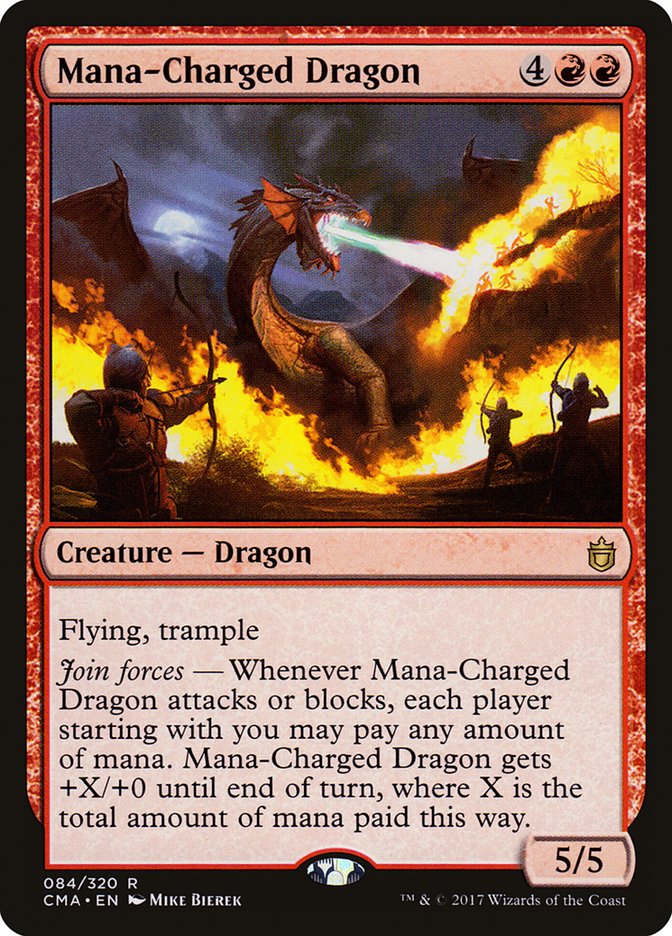
Mana-Charged Dragon’s join forces ability isn’t actually a spell, but rather an attack trigger. Killing the dragon with the join forces ability on the stack won’t remove that ability, and players can still put mana into it when it resolves. Naturally, this has no real effect since the dragon’s already dead.
What if You Kill the Player Who Cast the Join Forces Spell Before It Resolves?
Killing a player before their join forces spell resolves removes that spell from the stack. When a player leaves the game, all permanents they control are removed from the game, and all spells and abilities they control are removed from the stack. The spell no longer exists for people to put mana into, so no one gets anything. Thanks a lot.
Gallery and List of Join Forces Cards
Best Join Forces Cards
Minds Aglow
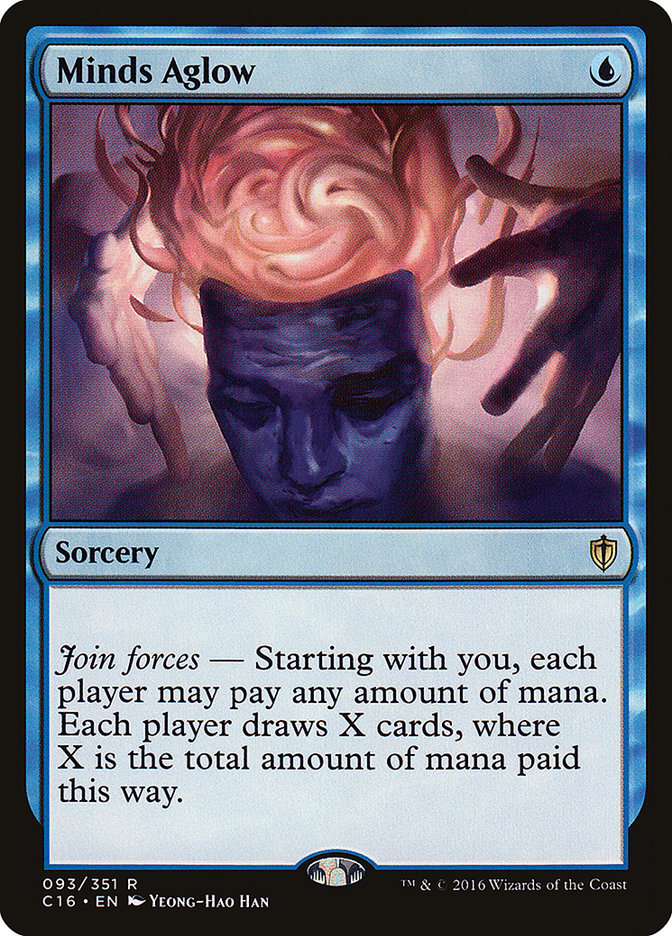
I’m of the opinion that all of the join forces cards are pretty bad, but some of them have specific homes and playstyles that pull them up. Minds Aglow is an example of a card that fits generous group hug decks quite well, and it makes some sense in decks that punish opponents for drawing cards (Nekusar, the Mindrazer, for example). The issue is that your opponents just won’t dump any mana into the card if it hurts them to do it, so it ends up just being Prosperity in those cases.
Collective Voyage
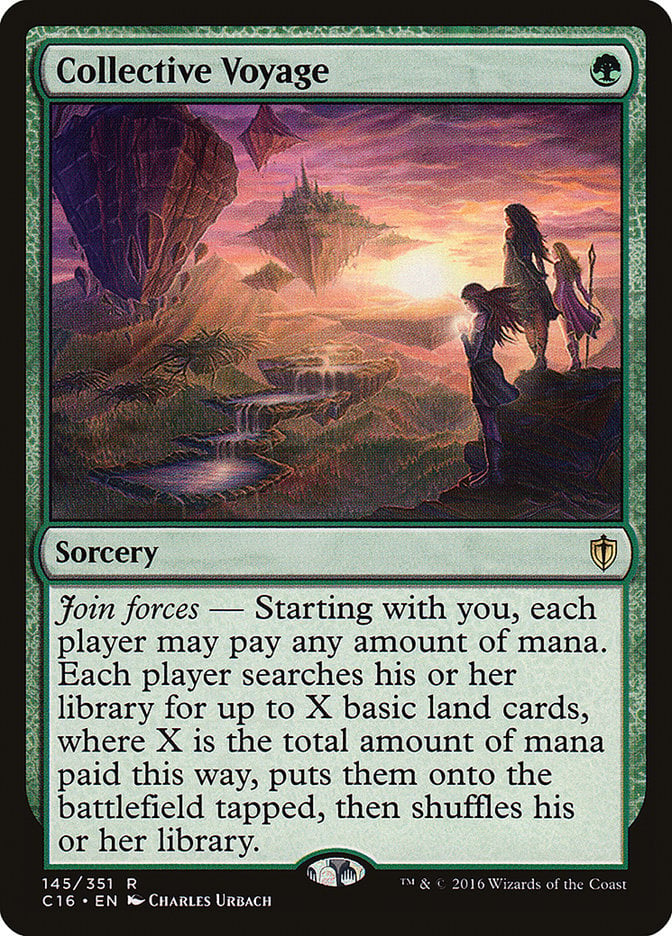
Collective Voyage is the most egregious card in the cycle due to its ability to accelerate a game out of control almost immediately. Imagine a game where everyone just plays a basic on turn 1, then you play a land on turn 2 and cast this. If everyone puts just one mana into the card, everyone gets four basic lands, on turn 2. Of course, it scales with the mana that’s put into it.
While there’s potentially high upside to the card and it can skip everyone past the developing stages of the game, it’s usually unwise to be the one spending a card to give everyone else access to an equal amount of mana. It’s like casting Dictate of Karametra at sorcery speed, passing the turn, and hoping nothing bad happens. Plus people get the land-searching benefit even if they don’t contribute to the card, which I find works against the spirit of what the card’s supposed to do.
Mana-Charged Dragon

Mana-Charged Dragon is the only card in the cycle that plays out in practice the way you intuitively think it would. You can’t really navigate the other join forces cards in such a way that doesn’t benefit the player with the best position at the table. Even if the other three players want to team up and “join forces,” the archenemy still gets the benefits of the card. And if you’re in the lead, no one pays anything.
However, you can absolutely send a giant flying dragon at that player, and the table can dump mana into it to make it hit harder. What’s the defending player going to do, add extra mana to it? Mana-Charged Dragon isn’t a hyper-powerful card, but it actually captures the concept of teaming up with individual players instead of just helping the entire table equally.
Actually, I Think I’ll Fly Solo
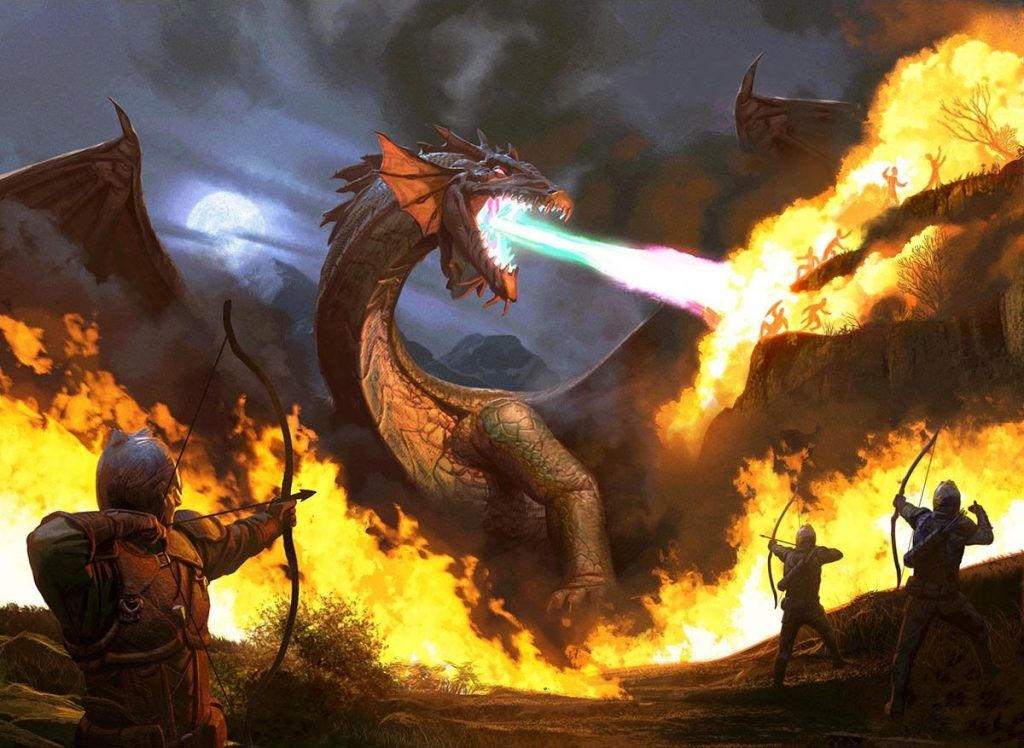
Mana-Charged Dragon | Illustration by Mike Bierek
I believe this mechanic plays out poorly, but as an early attempt to make a multiplayer-specific mechanic, I’m willing to give join forces a pass. I think conceptually the mechanic was meant to capture the idea of forming alliances with other players, but most of the cards are too symmetrical to do this without also bolstering the player who’s in the lead.
Imagine being at war and forming an alliance with another nation, but in order to do so you have to offer supplies and funds to the nation you’re teaming up against. It’s nonsensical. I’d much rather see the assist mechanic from Battlebond return before join forces. I’d actually just much rather cast Join Forces. Let’s also not ignore how bad Shared Trauma is.
Do you have a different take on this cycle? Have you found any niches where the join forces cards shine, or am I being too harsh on the mechanic? Let me know in the comments below or over in the Draftsim Discord.
Thank you for making Draftsim your #1 stop for all things Magic!
Follow Draftsim for awesome articles and set updates: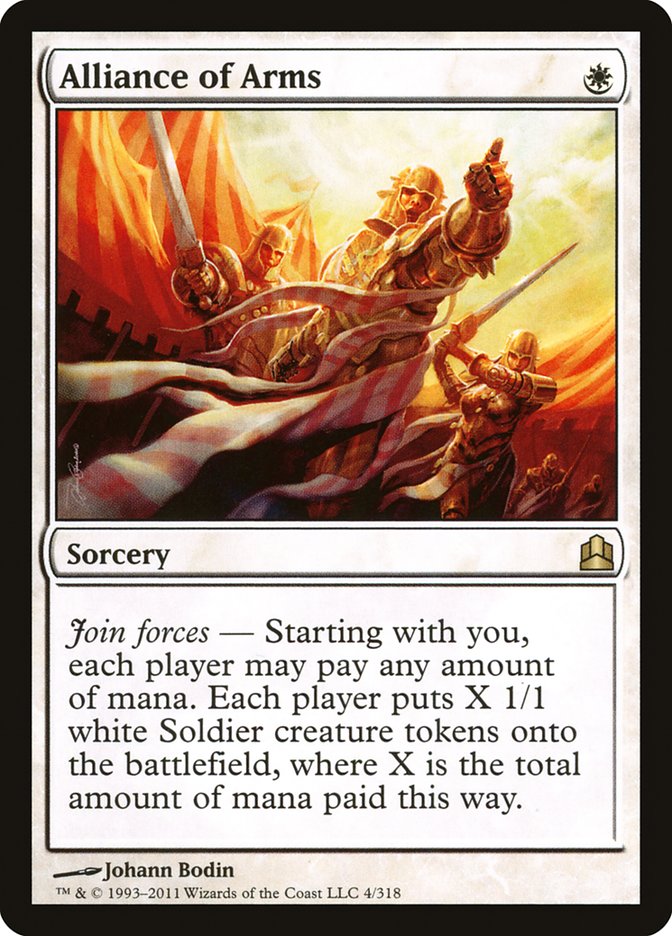


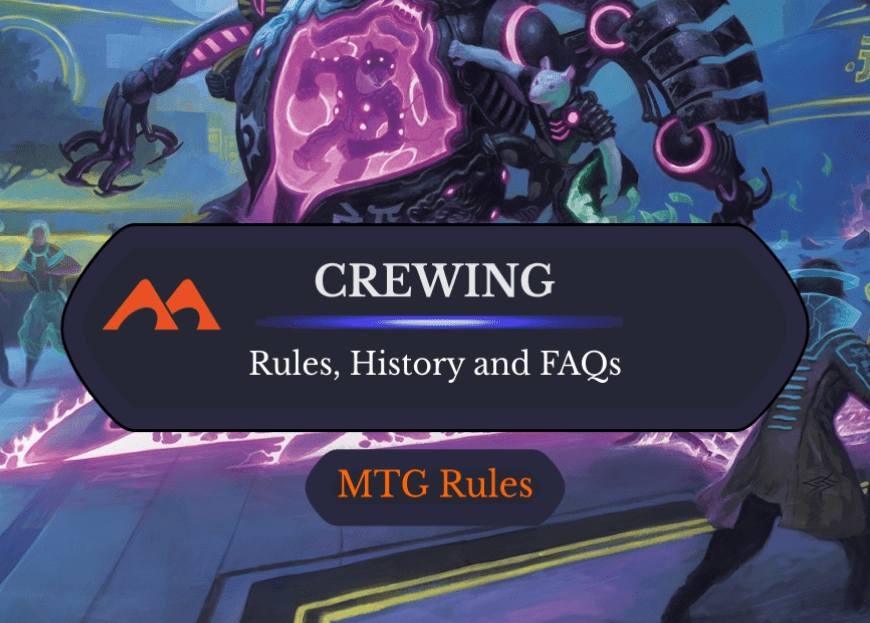
Add Comment